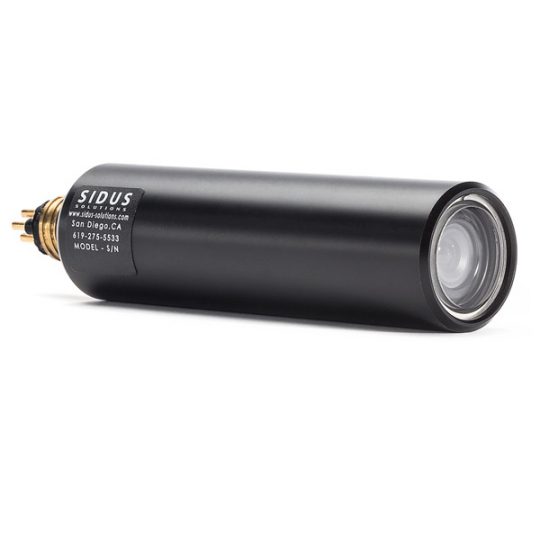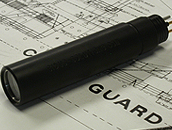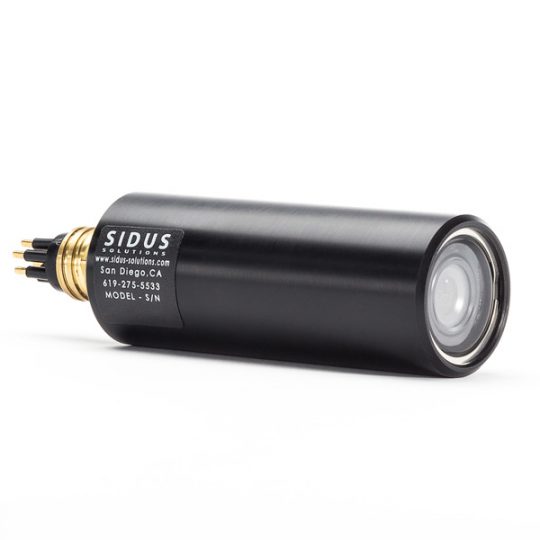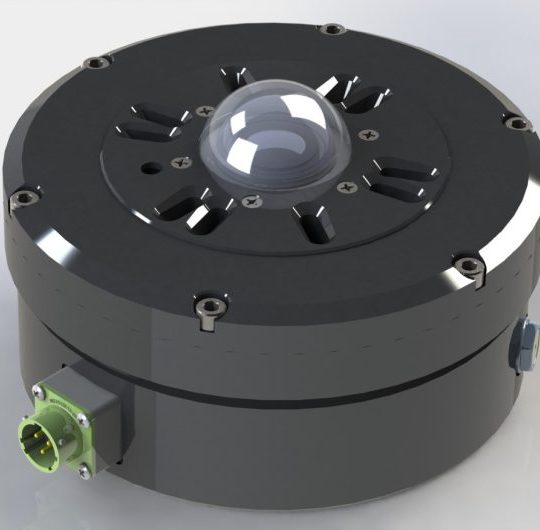Go Subsea
Advanced situational awareness, real-time surveillance, and monitoring
Situational Awareness is
Crucial
SIDUS subsea system integration specialists can convert, or retrofit existing components, or completely redesign subsea security, subsea surveillance, and/or subsea inspection and monitoring systems. Our advanced integrated systems are often custom built to the application, for the clients specific needs. SIDUS subsea cameras, positioners, lasers and ultra bright LEDs products are time tested and proven in the field, in the most hazardous and extreme conditions.
Our team of engineers, technicians, and designers understand and recognize the challenges and obstacles presented on the open ocean and under the water. Subsea equipment must be robust and built to withstand not only extreme temperature and pressure forces on the housing and internal components, but the motion of currents and tides.
SIDUS subsea system integration specialists can convert, or retrofit existing components, or completely redesign subsea security, subsea surveillance, and/or subsea inspection and monitoring systems. Our advanced integrated systems are often custom built to the application, for the clients specific needs. SIDUS subsea cameras, positioners, lasers and ultra bright LEDs products are time tested and proven in the field, in the most hazardous and extreme conditions.
Our team of engineers, technicians, and designers understand and recognize the challenges and obstacles presented on the open ocean and under the water. Subsea equipment must be robust and built to withstand not only extreme temperature and pressure forces on the housing and internal components, but the motion of currents and tides.
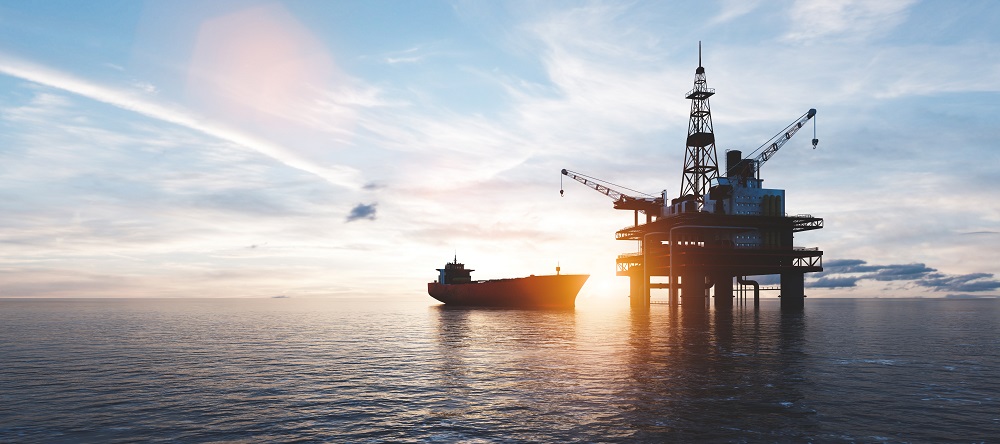
Subsea Products
SIDUS offers the widest range of camera stations and system solutions, we have the products and experience to meet today’s demanding surveillance and security needs. With subsea products and topside solutions available that are explosion-protected or weatherproof, analog or IP, fixed, dome or PTZ, our experience, and proven reliability can meet your specification requirements.
5 Ways We Work
With Clients
We are your partner for subsea and topsides solutions. From fully custom, build to fit implementations to system integrations and more, SIDUS brings you the expertise and experience to get the job done right.
Learn MoreSubsea Monitoring, Positioning & Inspection
Subsea Structural Surveillance and Monitoring (ROV, AUV, UUV, and Unmanned Vehicles). Subsea structures are found at the center of any subsea oil or gas field development or offshore wind farm and include all parts of subsea production systems; well heads, X-mas trees, valves, pipes, and anchors.
SIDUS subsea system integration specialists can convert, or retrofit existing components, or completely redesign subsea security, subsea surveillance, and/or subsea monitoring systems.
Subsea systems are generally on the seabed, in shallow (100-300 meters) or deep water (300-7000 meters). Subsea and underwater applications require equipment and components designed to withstand the pressure tolerances, temperatures and extreme environmental requirements of underwater and subsea systems.
Subsea Oil & Gas Deepwater Exploration
Offshore deepwater exploration has and will continue to increase as the demand for new fossil fuel resources intensifies. The focus on improving efficiencies throughout the global energy sector will drive the acquisition and installation of subsea and underwater security and surveillance systems to effectively monitor and analyze equipment operations. Offshore drilling presents a larger risk for the environment and take on the risk of oil spills in the ocean. Surveillance systems can help avoid leaks, keep structures and systems monitored and in good condition to prevent or mitigate disasters.
Research and Science also use subsea equipment to explore the oceans, waterways and lakes on our planet and for laying the ground work for future developments in marine renewable energy.
Protect and Secure
“Security & Safety…nothing is more important!”
At SIDUS Solutions, we help our clients effectively manage their assets through the protection of their facilities, safeguarding their goods, and, most importantly, the security and safety of their personnel. Our mission is to provide outstanding products, intended solutions, and after-sales support and service for all customers, domestic or international.
Experience, education, and in-field training are the factors you can’t fall short on when installing and commissioning subsea systems. During the installation and commissioning stage of the subsea operations, it is critical to have the highest level of engineering support to ensure safety and production. SIDUS provides expert engineering services and 24/7 technical support. Customer training is provided for the skilled and safe operation of equipment.
Types of Subsea Products
- Subsea Cameras
- SS400 HDR IP Color camera – max. 300 m
- SS401 Miniature Color Zoom camera with remote control
- SS402 Color camera – max. 3000 m
- SS403 B&W Low Light camera
- SS408 B&W Low Light IR Sensitive camera
- SS420 Color Zoom camera – max. 3000 m
- SS422 Color Zoom camera – max. 6000 m
- SS425 High-Resolution B&W, Low Light camera, Aluminum, 0.0001 Lux – max. 3000 m
- SS426 High-Resolution B&W, Remote Zoom camera, Aluminum, 0.0001 Lux – max. 500 m
- SS430 High-Resolution B&W camera, SS 316L, 0.0001 Lux – max. 3000 m
- SS435 High-Resolution, B&W, Low Light camera, Titanium housing
- SS446 High-Definition Color Zoom camera
- SS455 Hyperbaric IR HD video camera
- SS465 High-Definition IP Network Color Zoom camera
- SS474 HDR IP Network camera – TRUK
- SS490 4K UHD 20x Zoom camera
- SS550 DarkCrystal CAM – HDR IP Network camera
- SS560 Ultra Mini Color camera with adjustable white HBLED ring light
Subsea Positioners
- SS109APT Acoustic Pan & Tilt unit for imaging sonars, Aluminum housing – 30.5m up to 3000 m max.
- SS109HT High Performance Pan & Tilt unit – 4000 m up to 6000 m max.
- SS110 Pan & Tilt unit, SS 316L housing – 3000 m up to 6000 m max.
- SS120 Pan & Tilt unit, Titanium housing – 3000 m up to 6000 m max.
- SS250 “Deep Blue” Heavy Duty Pan & Tilt unit, Aluminum housing – 3000 m up to 6000 m max.
- SS251 Heavy Duty Pan & Tilt unit, SS 316L housing – 3000 m up to 6000 m max.
- SS252 Heavy Duty Pan & Tilt unit, Titanium housing – 3000 m up to 6000 m max.
Subsea Rotators
- SS309 Compact Rotator unit, Aluminum housing – 3000 m up to 6000 m max.
- SS310 Compact Rotator unit, SS 316L housing – 3000 m up to 6000 m max.
- SS320 Compact Rotator unit, Titanium housing – 3000 m up to 6000 m max.
- SS350 Heavy Duty Rotator, Aluminum housing – 30 m, 3000 m and up to 6000 m max.
- SS351 Heavy Duty Rotator unit, SS 316L housing – 3000 m up to 6000 m max.
- SS352 Heavy Duty Rotator unit, Titanium housing – 3000 m up to 6000 m max.
Subsea LED Lights
- DARK SABER – SS182mkII LED Light + Laser + Strobe – 4000 m up to 6000 m max.
- SS174 Stainless Steel Sea Torch – up to 3000 m max.
- SS181mkII High Output LED Light with dimming – up to 1000 m max.
Subsea Lasers
- SS501 Green Laser – up to 6000 m max.
- DARK SABER – SS182mkII LED Light + Laser + Strobe – 4000 m up to 6000 m max.
Subsea Inspection Systems
- Anchor Bolster Inspection System
- BOP Inspection Package
- Guide Wire Inspection System
- Video Laser Scan(tm) – MAYOL, A VLS(tm) 3D System
- Diver Detection Sonar System
- Diver Support Camera System
- Subsea Observation System
- Surface and Subsea Inspection Package
Subsea Systems Specialists – Cameras, Lasers, Gimbal Positioners & Rotators, and LEDs
SIDUS Subsea Inspection Systems
Anchor Bolster Inspection System
BOP Inspection Package
Guide Wire Inspection System
Video Laser Scan(tm) – MAYOL, A VLS(tm) 3D System
Diver Detection Sonar System
Diver Support Camera System
Subsea Observation System
Surface and Subsea Inspection Package
What type of Classification Rules and Regulations are required for Offshore Platform projects?
DNV, Lloyd’s Register Rules, Bureau Veritas, ABS and other Classification Organizations are in place to regulate and to provide classification and statutory services and assistance to the maritime industry and regulatory bodies as regards maritime safety and pollution prevention, based on the accumulation of maritime knowledge and technology.
ISO standards are international and generic, while NORSOK standards are regional and specific. API standards are mainly focused on the US market, while DNV standards are more global and comprehensive.
Are subsea product certifications required?
ABS publishes a guide for the Classification and Certification of Subsea Production Systems Equipment and Components DNV publishes a Certification and verification of subsea equipment. In the Offshore Industry, subsea products, diving equipment, and subsea processes require classification and certification by a third party. These are situations where hazardous and explosive environmental issues are present. Clear safety and regulatory processes are in place to always assure crew and equipment safety.
What is a subsea structure?
A subsea structure can be described as:
- Offshore oil platforms (An Oil Platform or Oil Production Platform, FPS, TLP or FPSO produce the oil flow from the wells)
- Bottom-founded drilling rigs (Jackup barges and Swamp barges)
- Combined drilling and production facilities, either bottom-founded or floating platforms
- Deepwater mobile offshore drilling units (MODU), including semi-submersibles and drill ships
What is subsea inspection and why is it necessary?
The inspection, maintenance and repair of subsea infrastructure such as pipelines, cables, and wellheads is essential to avoid spills and leaks. Inspection, Maintenance and Repair (IMR) equipment allows for visual inspections, thickness measurements, non-destructive testing (NDT), repairs, and component replacements. This ensures that the production can continue safely without costly downtime and pollution remediation.


